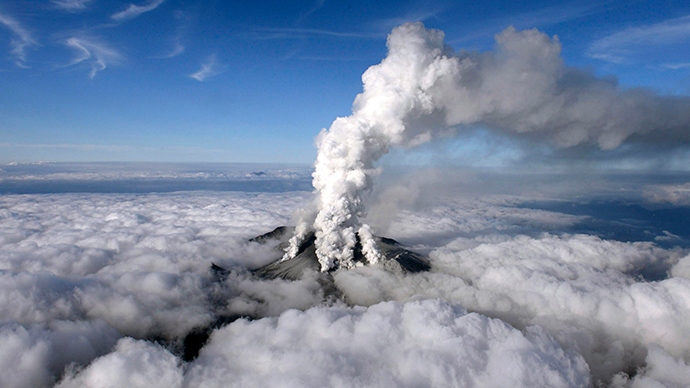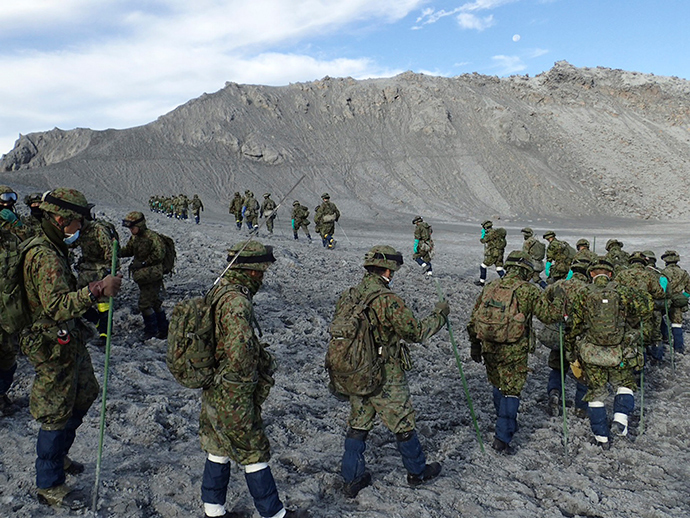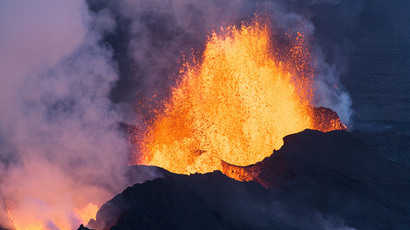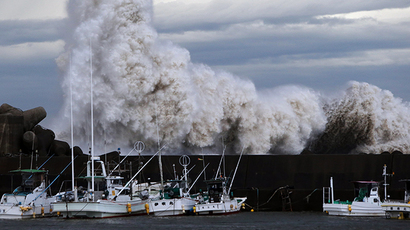Enormous volcanic eruption could destroy Japan within 100yrs – study

About 95 percent of Japan’s population is at risk of being devastated by a major volcanic eruption, which could happen “at any moment” within the next century, a study revealed. Volcanic activity has reportedly increased recently.
The research, conducted by Japanese scientists, was released on Kobe University's website on Wednesday.
"It is not an overstatement to say that a colossal volcanic eruption would leave Japan extinct as a country," the authors said, according to AFP.
Kobe University’s professors Yoshiyuki Tatsumi and Keiko Suzuki analyzed the scale and frequency of local volcanic eruptions over the past 120,000 years. At about 1 percent over the next 100 years, they predicted a possibility of a massive volcanic eruption that could leave about 120 million people living across Honshu, Japan’s main island, "hopeless."
But this figure shouldn’t be underestimated, the scientists warn. Back in 1995, a day before a 7.2-magnitude quake destroyed Kobe – with almost 6,400 people killed and 4,400 injured – the chance of a major earthquake striking that Japanese port city was estimated at a similar 1 percent.

Nearly 7 percent of the volcanoes that have erupted over the past 10,000 years are located in the nation, with a population of 127 million people.
One of them, a gigantic crater, 23km (14 miles) across, in southern island of Kyushu, which has been struck by seven massive eruptions over the past 120,000 years, served as a model for the scientists.
According to their prediction, should the eruption occur, in just two hours the area would be buried by flows of lava and molten rock, and westerly winds would carry volcanic ash to the second most-populous island in the world, making it "unlivable."
Another Kyushu mountain, Ioyama, has recently shown some signs of volcanic activity, such as small tremors, an official at the Japan Meteorological Agency's volcano division told Reuters on Friday. Belonging to Kirishima range, it is located some 64km from the Sendai nuclear plant, run by Kyushu Electric Power Co.
Furthermore, the frequently erupting Sakurajima Volcano, about 50 km from the plant, also forced officials to issue a warning for people not to approach the peak.

Although the nuclear plant is currently not operational, it may be restarted next year, after it passes safety checks and gets the approval of local authorities.
In late September, the nation’s deadliest volcanic eruption in almost 90 years occurred. Honshu's Mount Ontake dramatically erupted without warning, killing 57 hikers and leaving at least six other people missing.
Japan is home to nearly 100 active volcanoes, lying on the ‘Ring of Fire’ – a 40,000km-long horseshoe-shaped area around the coasts of the Pacific Ocean, where a large number of earthquakes and volcanic eruptions occur.














